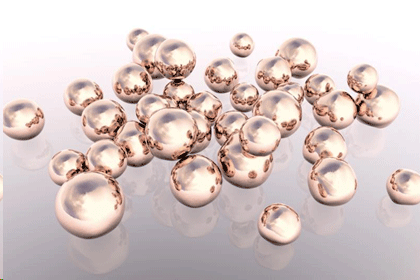|
ENTREVISTAS
Taking a Green Approach to Nanotechnology. However, this challenge offers opportunity for innovation, said James Hutchison, Ph.D., a professor of organic, organometallic and materials chemistry and founding director of the ONAMI Safer Nanomaterials and Nanomanufacturing Initiative at the University of Oregon.  Green Approach to Nanotechnology. Créditos: The R&D
Hutchison is an advocate of a “green chemistry” approach to nanomaterial production— one which considers material design, processes and applications that have the potential to reduce environmental hazards at each stage of the life cycle. He will discuss this concept in his presentation “Nanomaterial Design Guided by the Principles of Green Chemistry,” at the AAAS 2017 Annual Meeting, Saturday, February 18. He outlined the key points of his talk in an exclusive interview with R&D Magazine. As an example, if you have a cadmium-containing nanoparticle, zinc oxide, or silver, each of those will— because of the high surface area of the particles and therefor a lot of exposure of the surface of the particle to the environment— likely leach out the toxic ions within them. In that case, the toxicity that one observes is just due to those ions. That is one aspect of the environmental impact of nanotechnology. The other major aspect is the production of the material. We’ve been studying nanomaterials really actively for over 20 years, but much of the effort has been on trying to identify new properties and not necessarily figuring out how we are going to manufacture these materials efficiently and cost-effectively. In most nanomaterial today, we are still pretty early on with respect to efficient and scalable production of the material. As a consequence of that, we are not making efficient use of the raw materials because the yields are low, and we are also producing waste streams because our conversion of those raw materials to products is usually low. However, there are many environmentally beneficial applications of nanotechnology. One of the cool things that has come about in the last two years has been that, as we start to evaluate the life cycle, we have really tried to weigh what the benefit is versus what the implications are. This also then becomes a design vehicle. We can now say, if we can increase the efficiency of this material by X amount we will have a net environmental benefit. We can then design to enhance that net benefit. How do you tip the balance? One way is to dramatically increase the benefit. The other way is to significantly decrease the impact, or both. We are also trying to systematically reduce the waste that is generated. When we take raw material and turn it into a product, we need to ensure that all or a substantial amount of the raw material ends up in the product and not in the waste instead. How do we reduce energy consumption during the process? We do that typically be using catalysts that will allow us to operate a chemical transformation at a lot lower temperature. These are some of the things that we do to try and reduce their overall impact on the environment.” Silver on textiles for anti-odor capabilities is another example. It turns out that the substantial impact that silver has on the environment is actually the extraction of the silver from land, and the release of silver back into the environment. What you can do that will be most advantageous is to use the least amount of silver you can to still achieve the function that you need. It’s simple, but it turns out that many of the technologies used a few years ago used thousands of times more silver on the coating of the fabric than necessary. In that regard you don’t get added performance, you don’t get added anti-odor capabilities, but you are using a lot more silver. With the old technology that used lots of silver you can essentially never get a net environmental benefit, even though you may not wash the clothing as often and save water and electricity. However, if you are able to reduce the quantity down to what is essentially the therapeutic level by a factor of one-thousand, now it only takes not washing that garment by about two washes over the course of its lifetime to achieve a net environmental benefit. The green chemistry approach there was to actually weigh the performance that you want and the impact and then create a design process for that product to achieve that net environment benefit.” The whole point of nanotechnology is that we identify new properties by manipulating matter at the nanoscale. So long as we continue to do that, and innovate in that way, we are going to be generating new materials that could potentially have some harm. There is always going to be some level of uncertainty, but I think we’ve made amazing progress in the last ten years in terms of zooming in on the areas that have the most possibility to cause a problem, and then using these high throughput screens to triage and figure out which few look like they may have a negative impact and study those in more detail. In the last five to ten years, green chemistry has really been viewed as a way to innovate, it’s a way to think differently and discover new innovative solutions that might not have been on people’s radar if they haven’t been thinking about these challenges. Industry has really jumped on this because they see, not only the value of stewardship of the environments and customer satisfaction with their product, but money-saving potential of reducing the environmental impact as well.” This interview has been edited for clarity and length. The R&D. Posted: February 17, 2017 by Laura Panjwani. |
||||||||||||||||||||||||